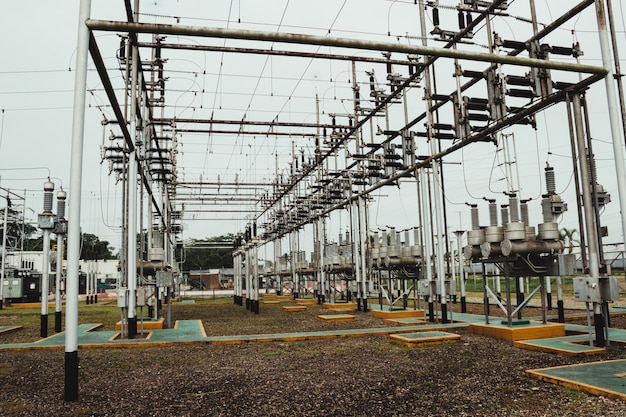The backbone of modern power distribution systems lies not just in the intricate network of wires and transformers, but equally in the civil design of substations. Substation civil design encompasses the foundational elements that support the entire structure—from site layout and drainage systems to access roads and safety barriers.
But why is this facet so crucial? The effectiveness, reliability, and safety of power distribution hinge on a well-planned substation that can withstand the rigors of environmental conditions and operational demands. With the increasing complexity of energy needs and the rise of renewable sources, the civil design must adapt, ensuring that the infrastructure not only meets current standards but is also future-proofed for the challenges ahead.
Delving into this often-overlooked aspect reveals the pivotal role it plays in the smooth transmission of electricity to homes and businesses alike.
The Importance of Substation Civil Design

Substation civil design is a cornerstone of effective power distribution systems, orchestrating the seamless integration of infrastructure with functionality. This facet of engineering entails meticulous planning and execution, where every detail—ranging from site selection to drainage and access roads—plays a pivotal role.
An optimal civil design not only ensures structural integrity and safety but also enhances operational efficiency. Imagine a world where a well-designed substation can withstand the battering of harsh weather or the impacts of seismic activity; the reliability of our electrical grids hangs in the balance.
Moreover, thoughtful civil designs facilitate maintenance and accessibility, minimizing downtime and bolstering the overall resilience of power networks. As the demand for energy continues to escalate, the significance of robust civil design becomes increasingly evident, forming the silent backbone that supports the electrified lives we lead.
Design Features and Engineering Practices
Design features and engineering practices in substation civil design are critical in ensuring that power distribution systems are robust, resilient, and efficient. At the heart of these designs lies the meticulous consideration of site selection, which involves assessing soil stability, hydrology, and environmental impact to mitigate risks associated with flooding or seismic activity.
Structures must not only support heavy equipment like transformers and switchgear but also withstand harsh weather conditions—think extreme winds and heavy snow loads. Engineers often employ advanced modeling techniques and simulations to predict how materials will behave under various stresses, blending innovation with practical solutions.
Furthermore, incorporating sustainable practices, such as the use of recycled materials and design for minimal environmental disruption, is becoming increasingly vital. This multifaceted approach ensures that substations are not only functional but also contribute to a sustainable energy future, aligning with evolving industry standards and community expectations.
The intricacy of these designs underscores their foundational role in the reliability and safety of our power distribution networks.
The Future of Substation Civil Design

As we look ahead, the future of substation civil design is poised for transformation through the integration of advanced technologies and innovative materials. Engineers are increasingly leveraging 3D modeling and Building Information Modeling (BIM) to visualize intricate designs and enhance spatial coordination, enabling them to foresee potential challenges long before construction begins.
Simultaneously, the push towards sustainability is prompting a shift toward eco-friendly materials and practices, ensuring that substations are not only functional but also environmentally conscious. However, this complex interplay of technology, engineering standards, and regulatory demands necessitates a reimagined approach to design—one that embraces flexibility and adaptability to effectively meet the rapidly evolving landscape of power distribution systems.
As we step into this new era, the synergy between traditional expertise and modern advancements will be crucial in shaping the resilience and efficiency of electrical grids worldwide.
Conclusion
In conclusion, substation civil design plays a pivotal role in the functionality and reliability of power distribution systems. Its careful planning and execution ensure that substations can support the electrical infrastructure while maintaining safety, accessibility, and resilience against environmental challenges.
As the demand for energy continues to grow and the industry shifts towards more sustainable practices, the importance of robust civil design becomes even more pronounced. By investing in comprehensive substation civil design, energy providers can enhance the efficiency and longevity of their power distribution networks, ultimately contributing to a more stable and secure energy future for all.


